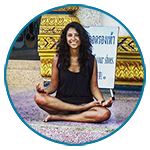Louise Armstrong used to say that if you need to ask what Jazz is, you will never understand it.
This phrase, which has gone down in history, contains the infinite essence of what cannot be defined.
Shiatsu like Jazz is listening, energy, emotions and practice.
To all newbies who ask me to explain what Shiatsu is, I ask what is the first instinctive action they perform when they have stomach pain, a migraine or simply hit their knee.
The answer is always the same, place your hands on the painful area and apply pressure to the area to give relief.
This is Shiatsu.

